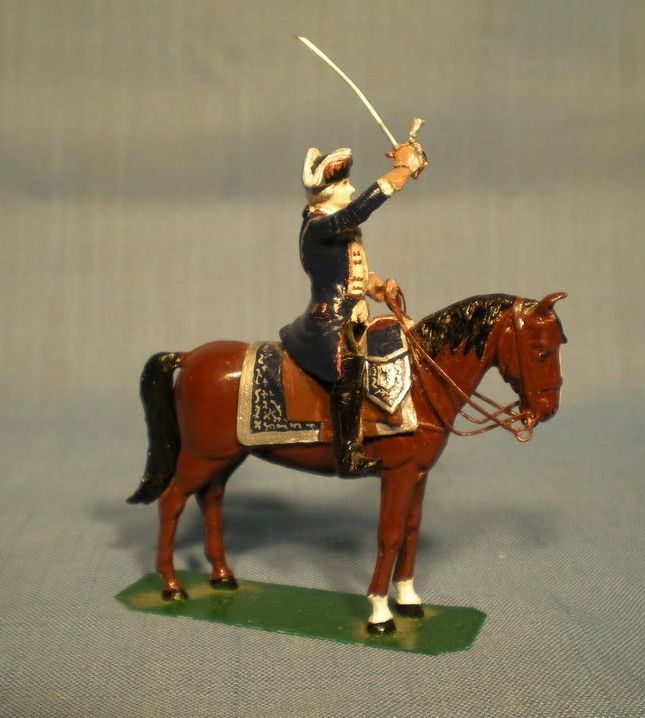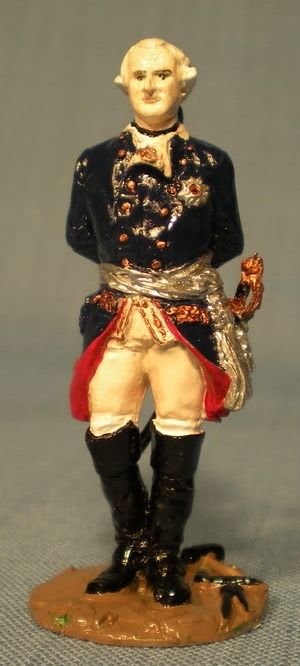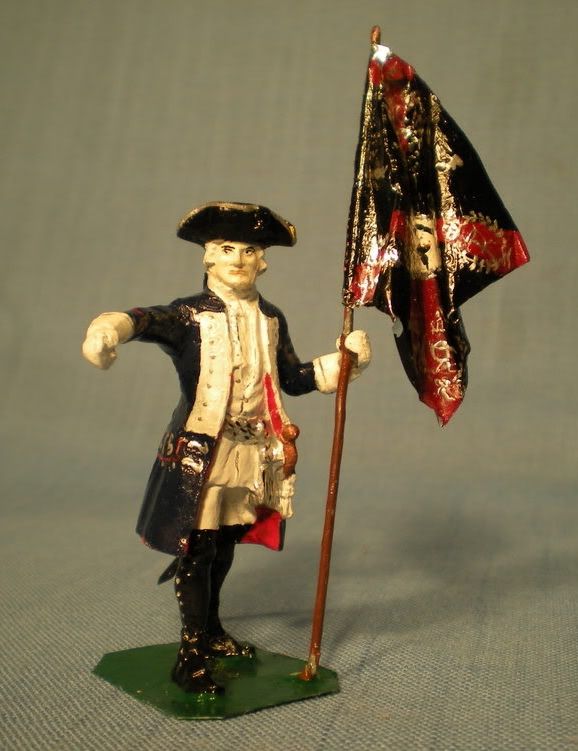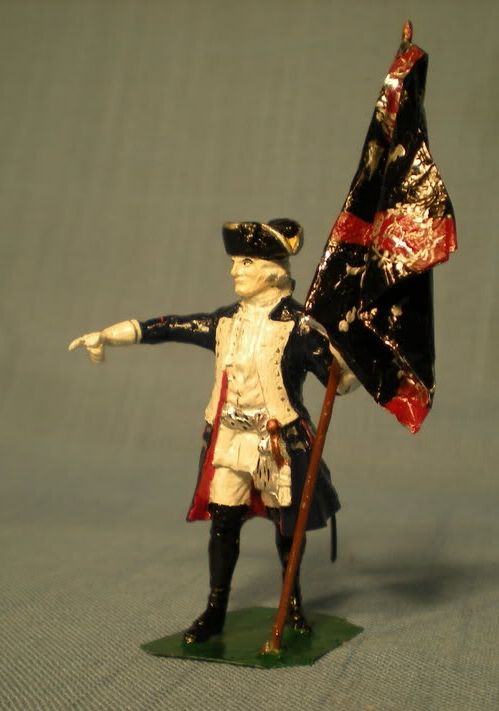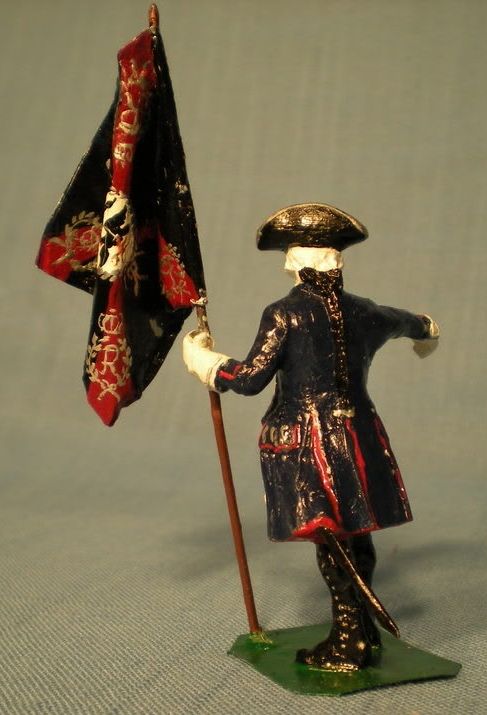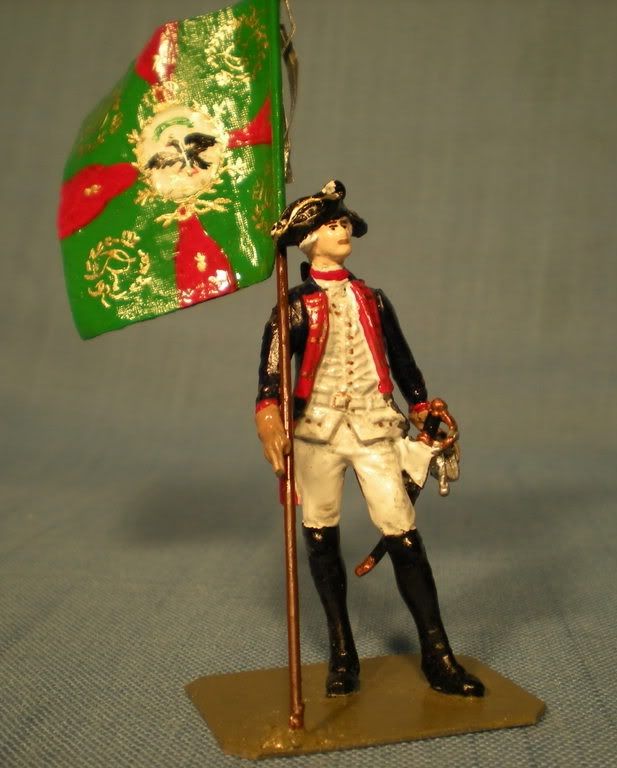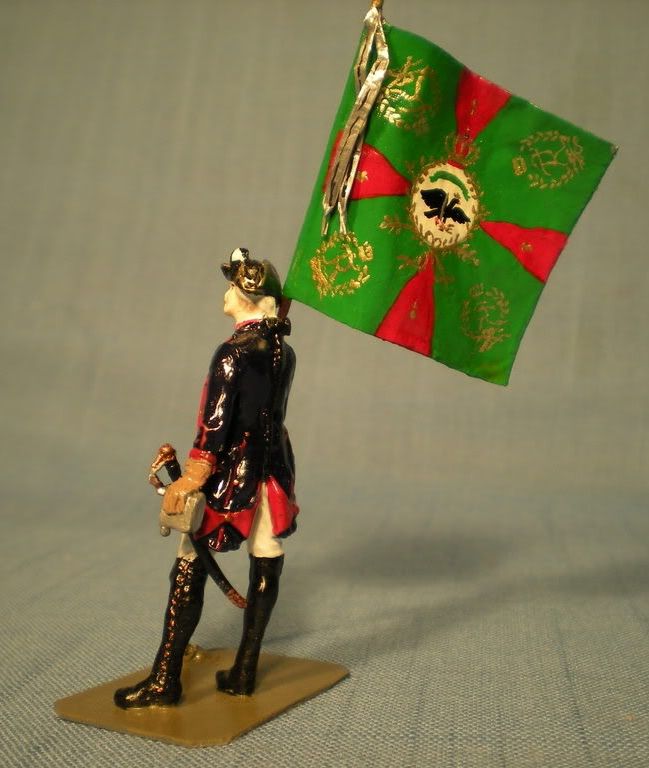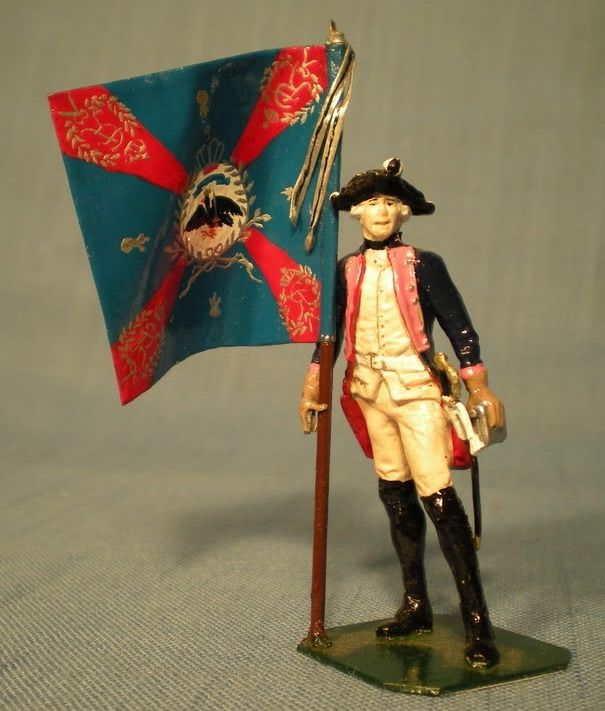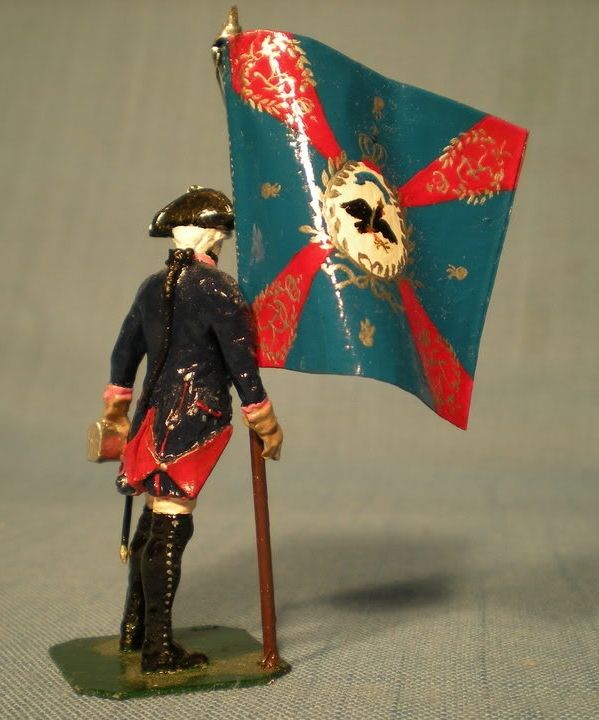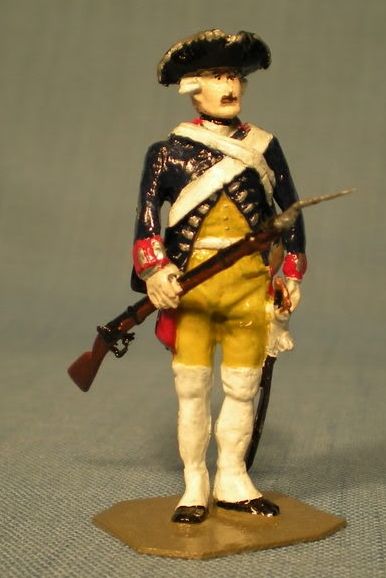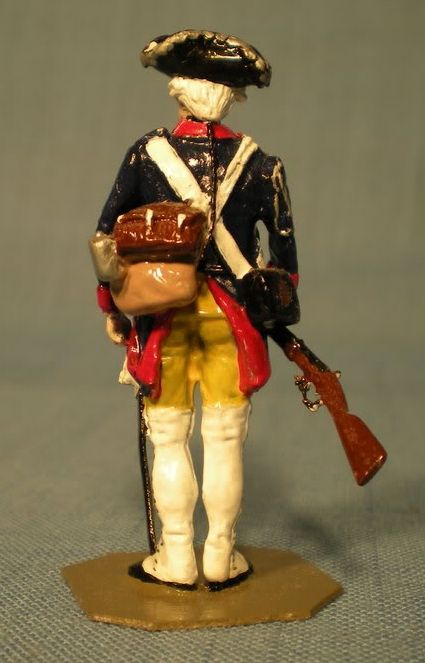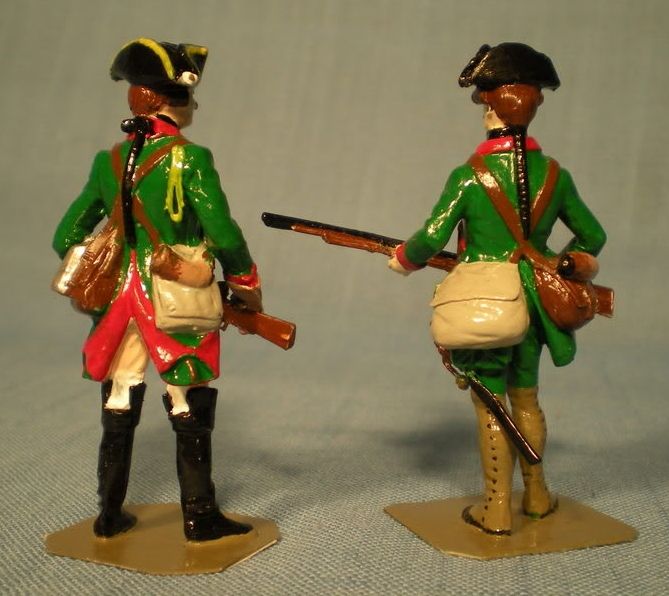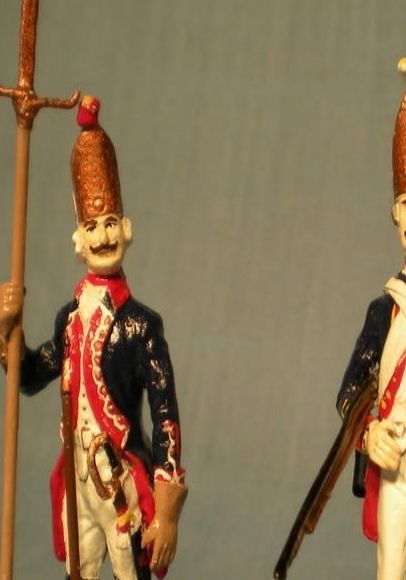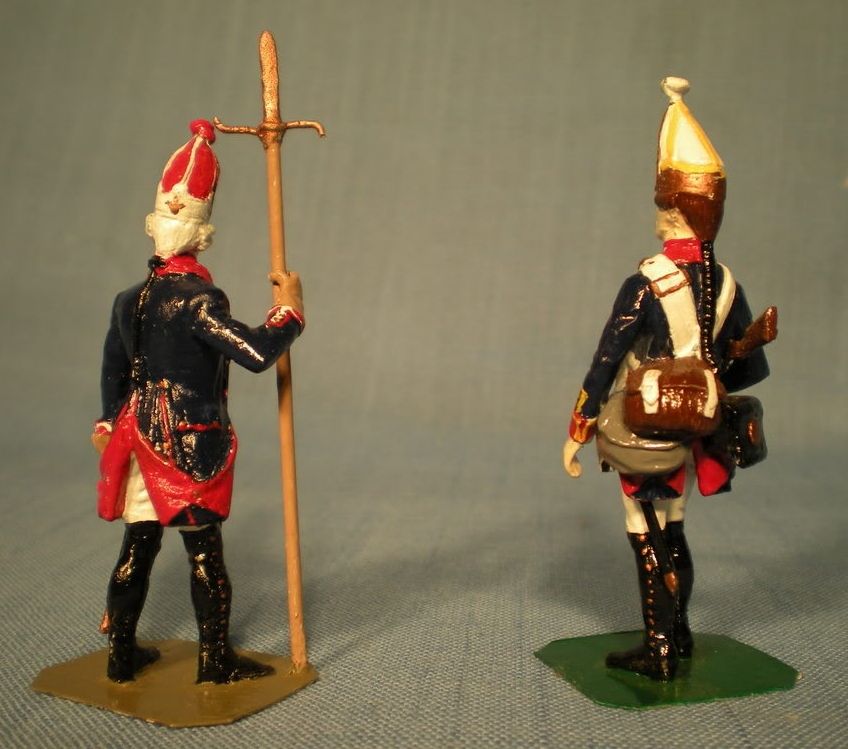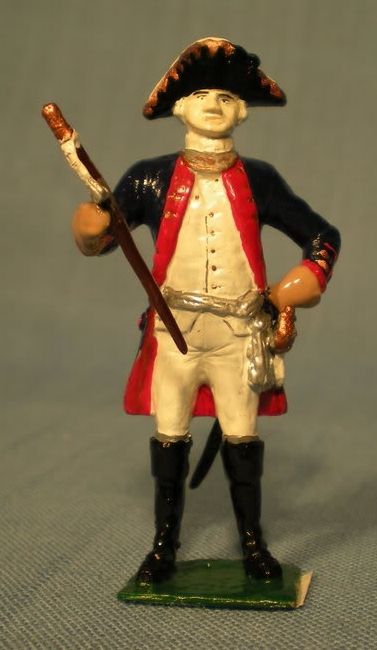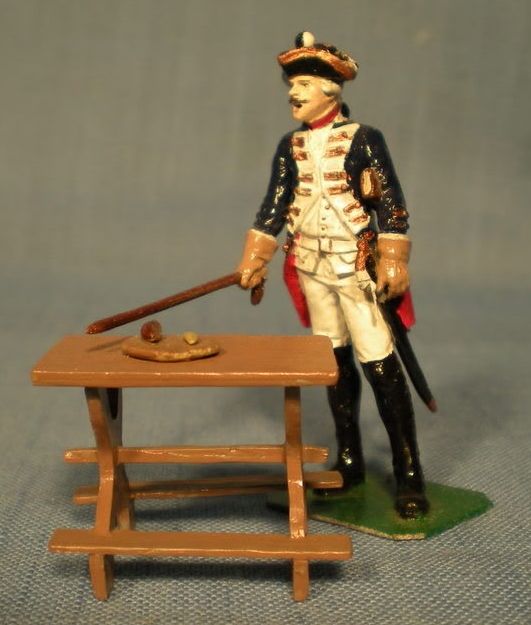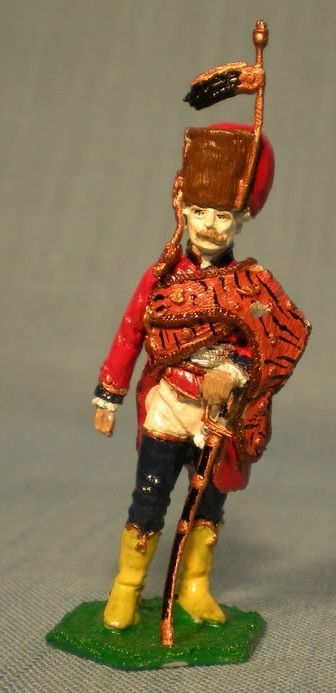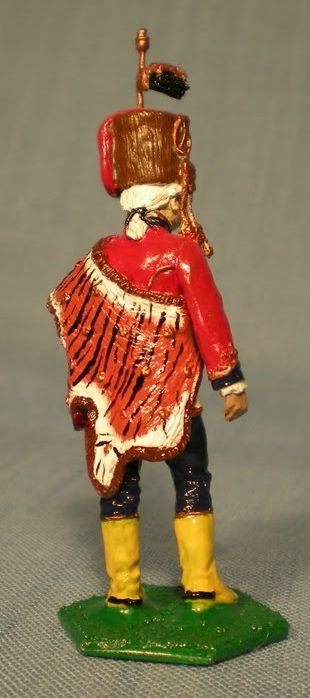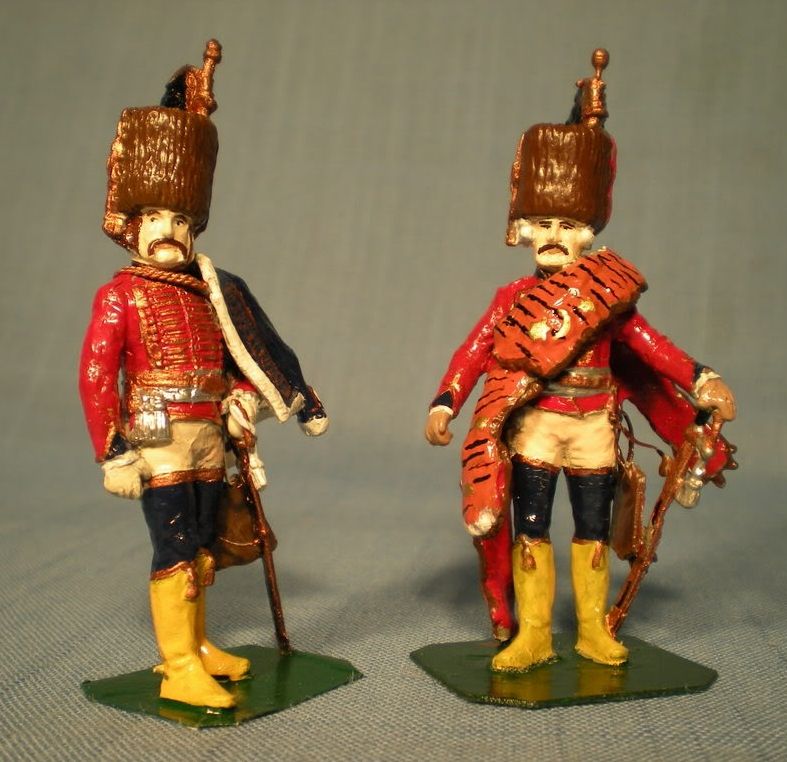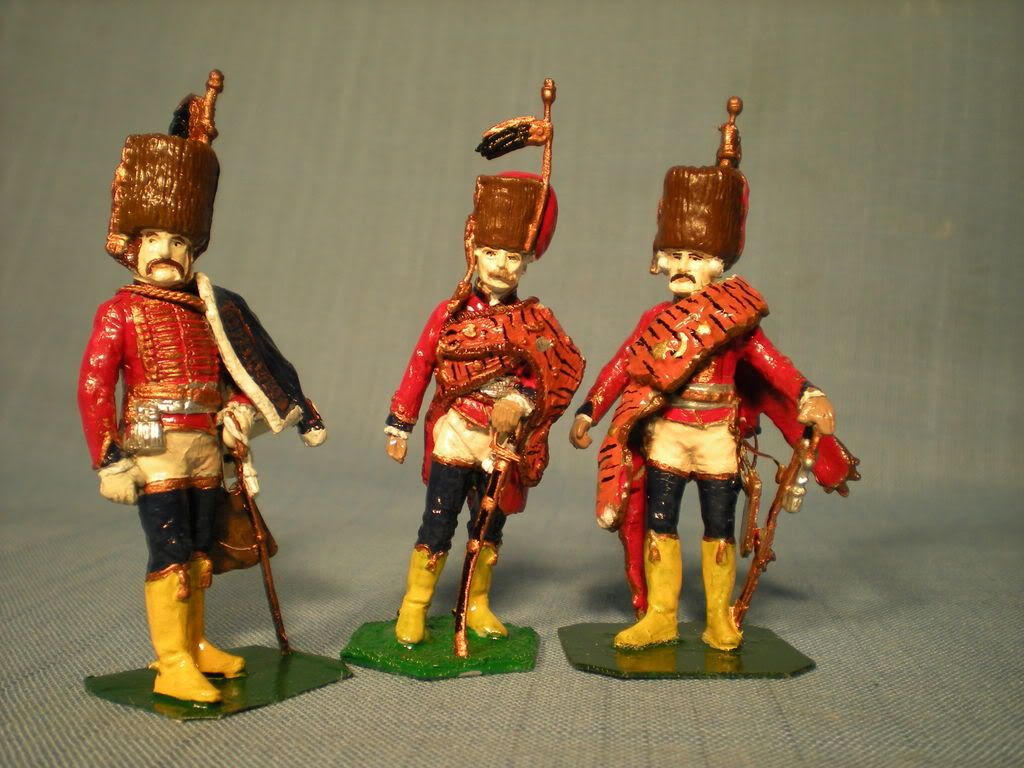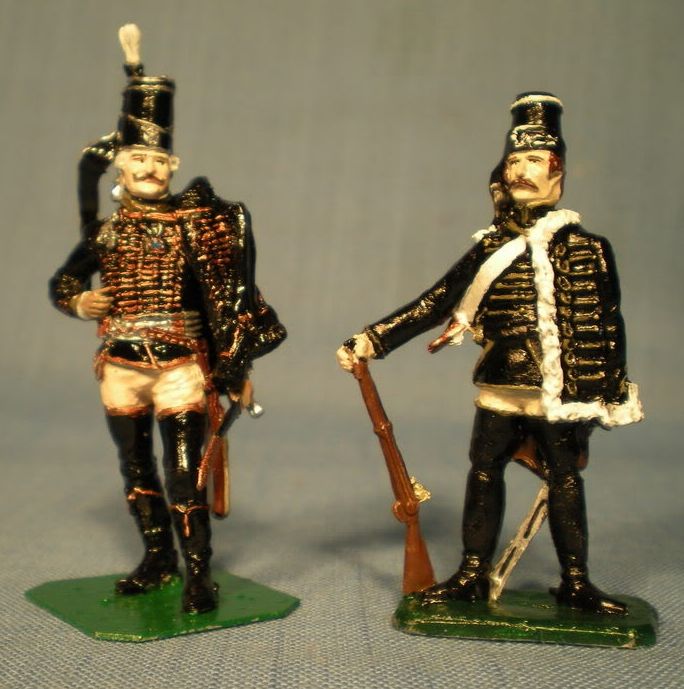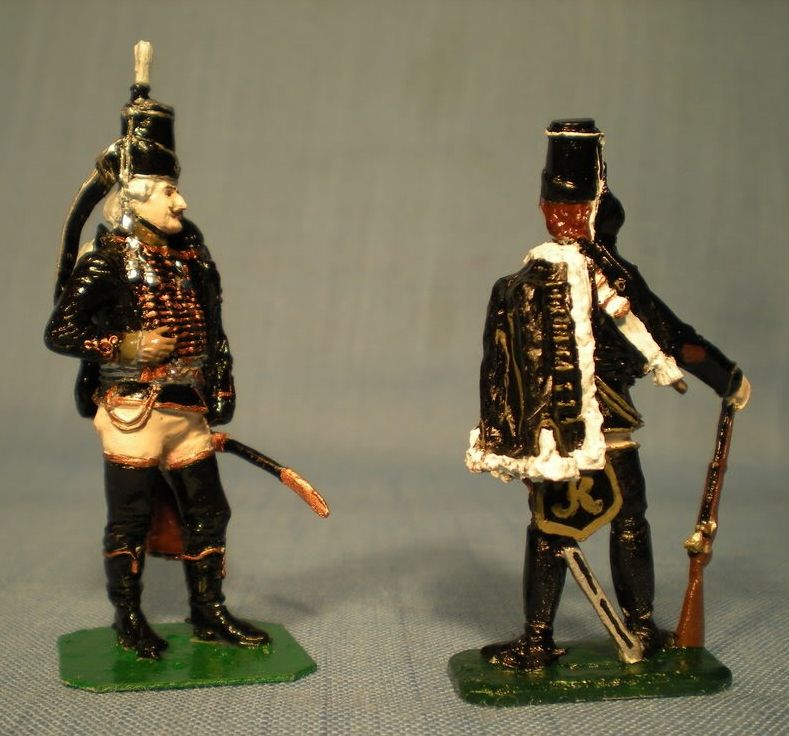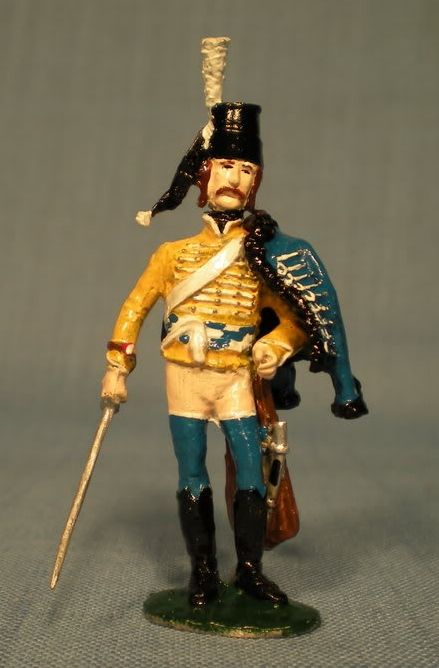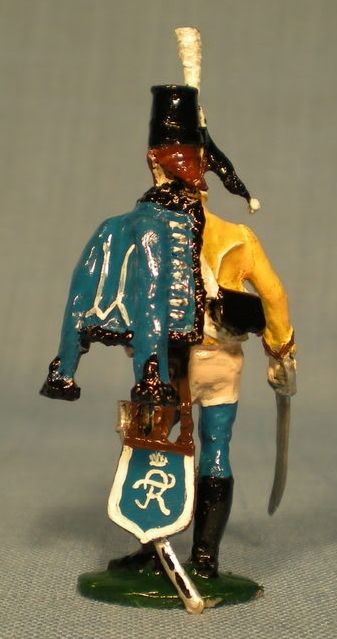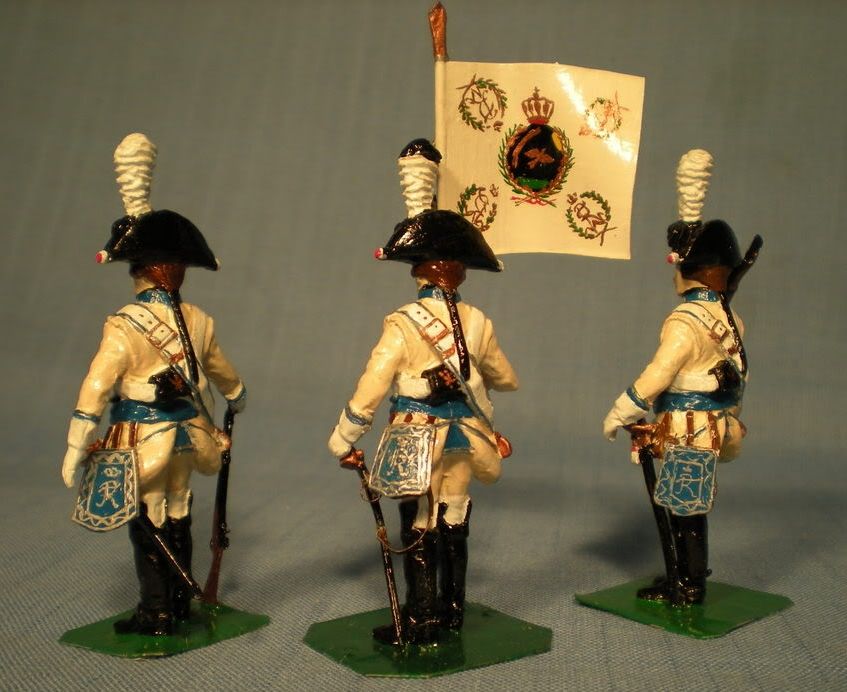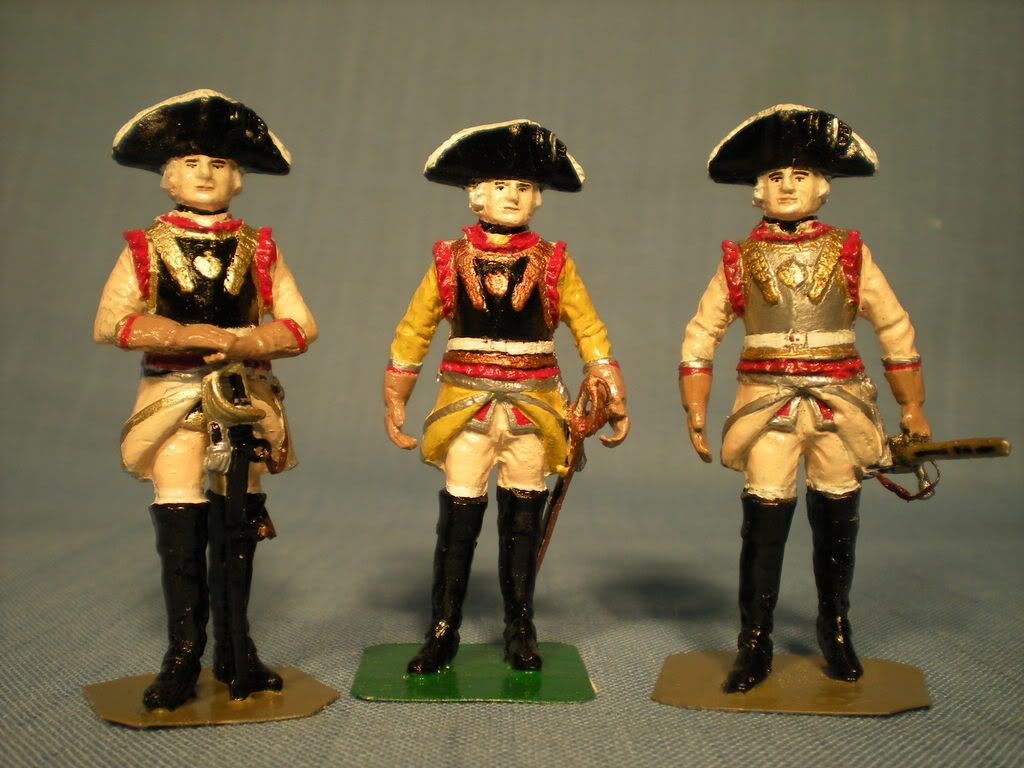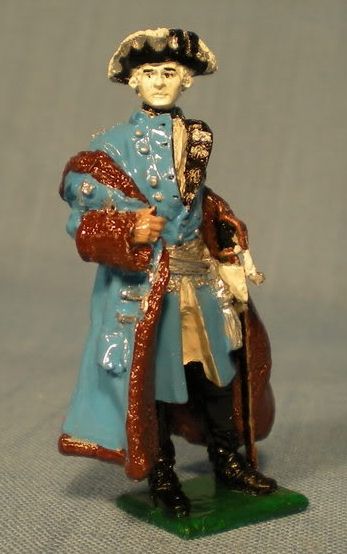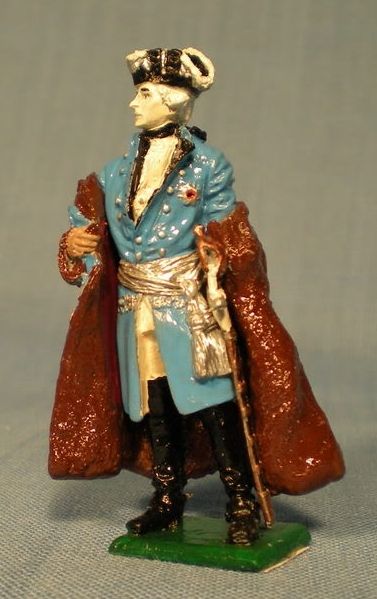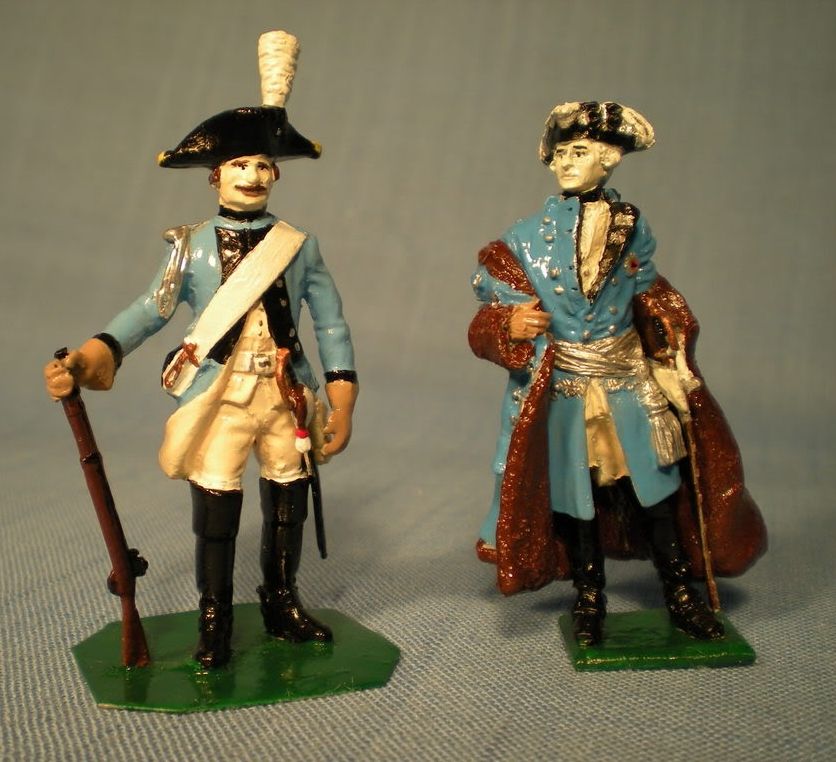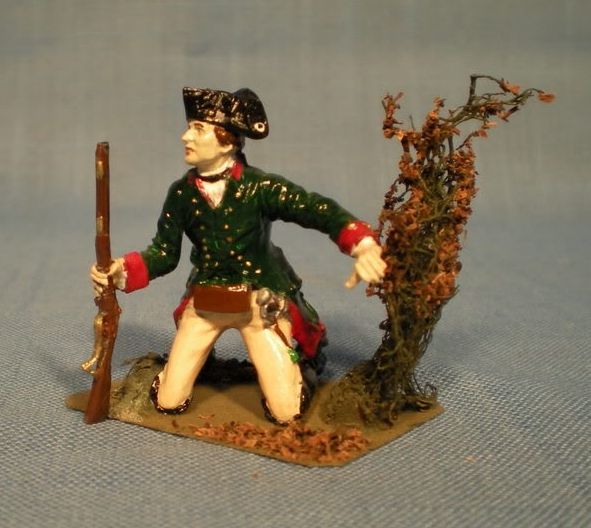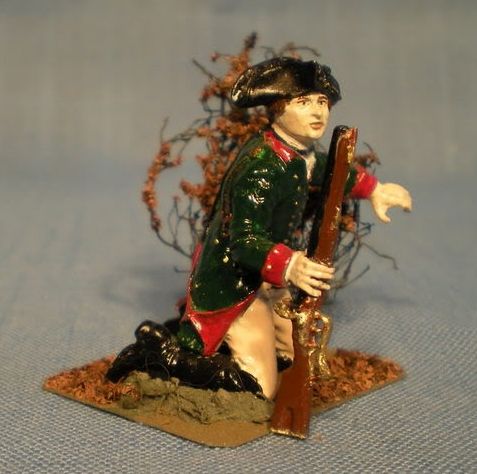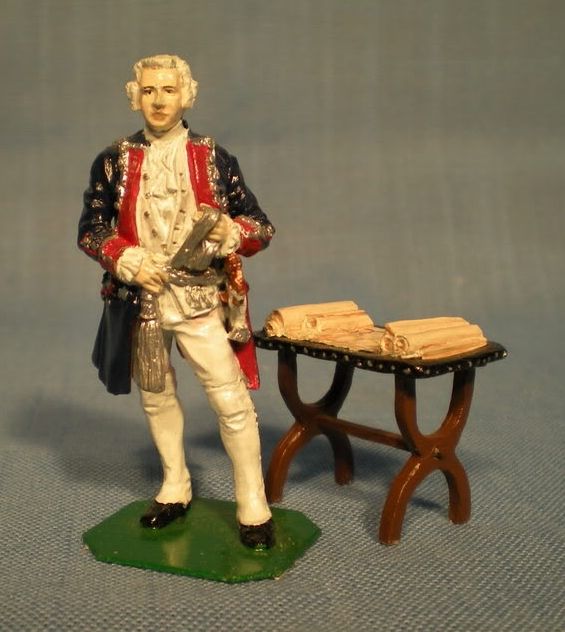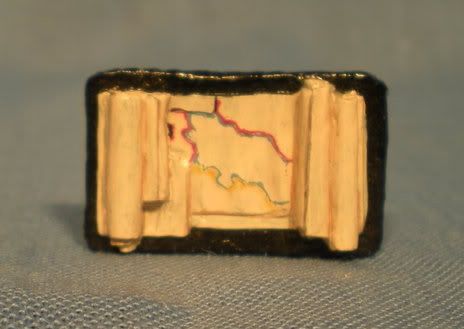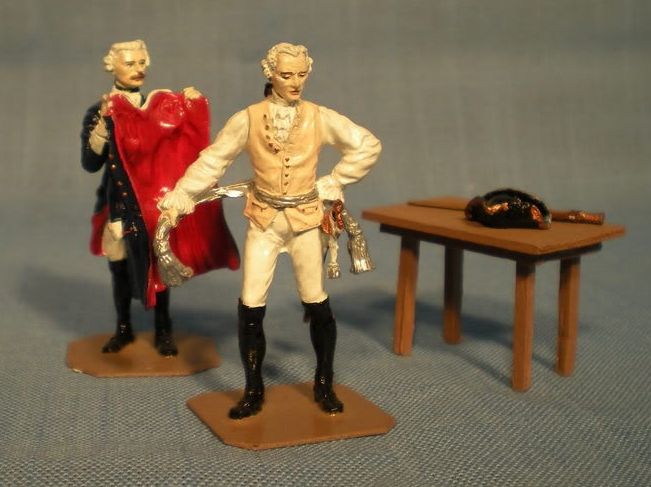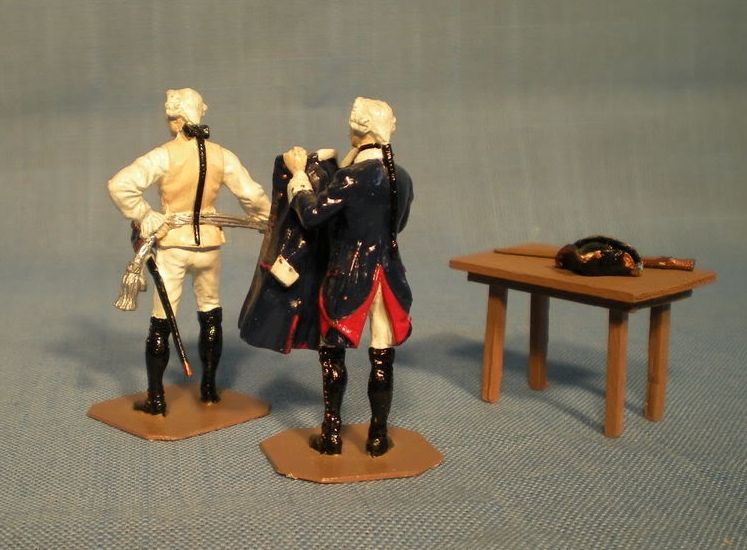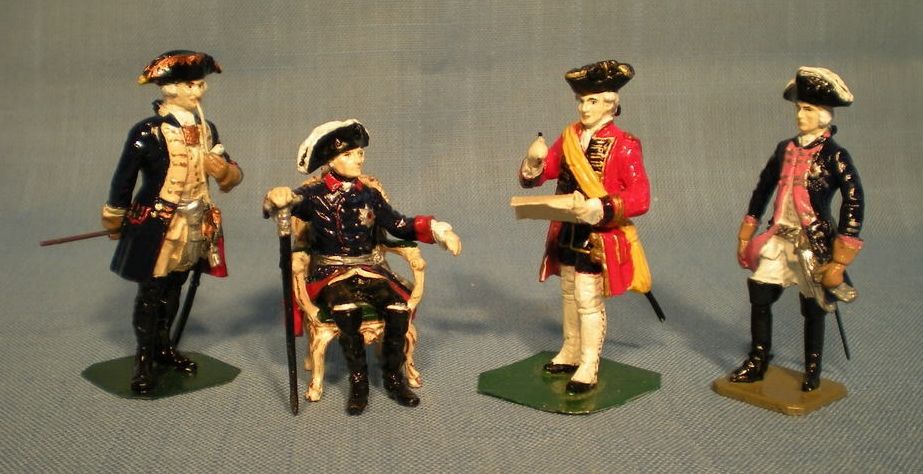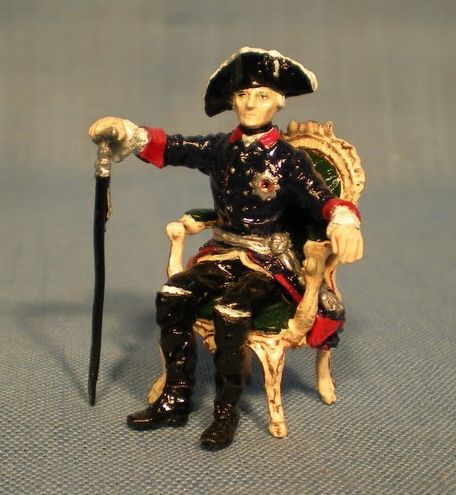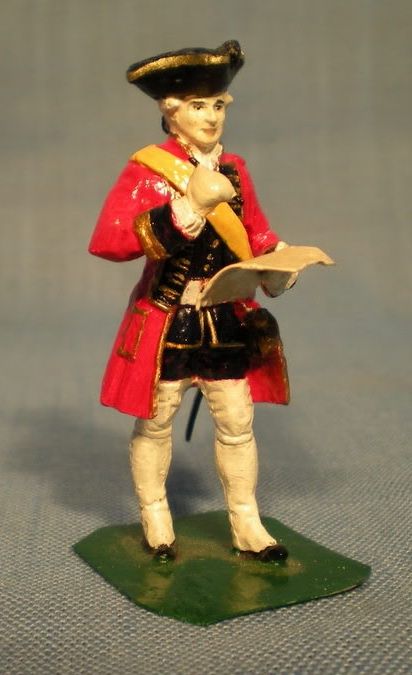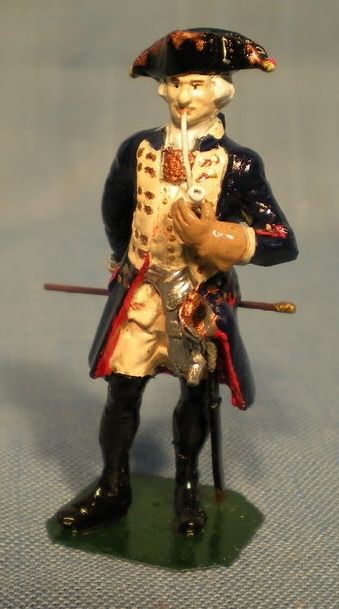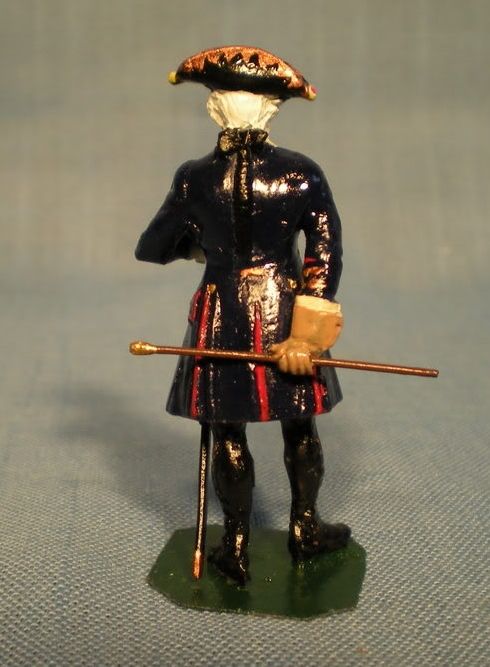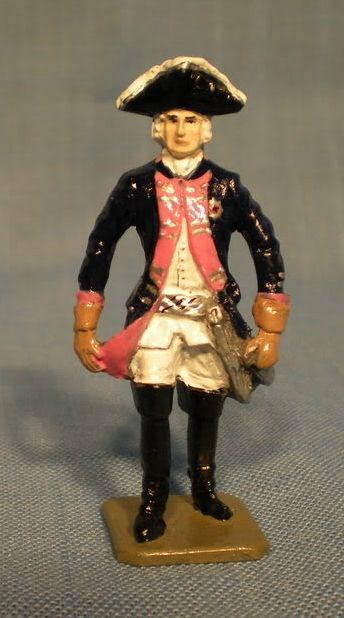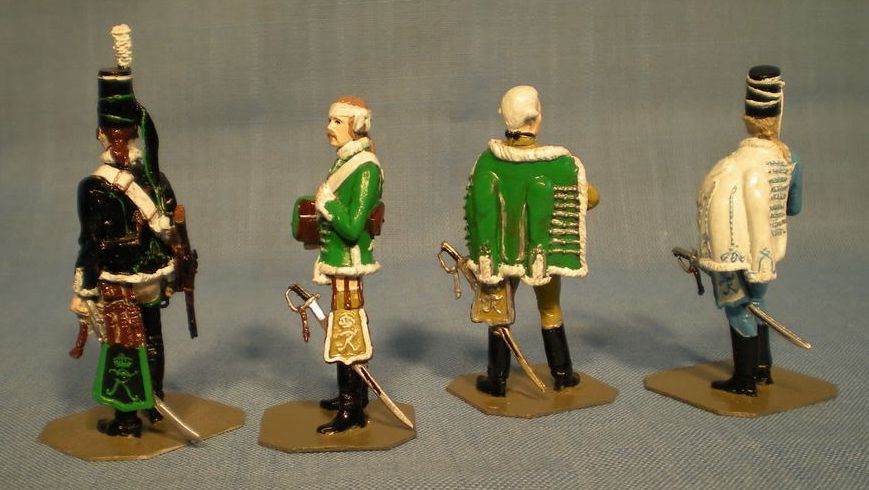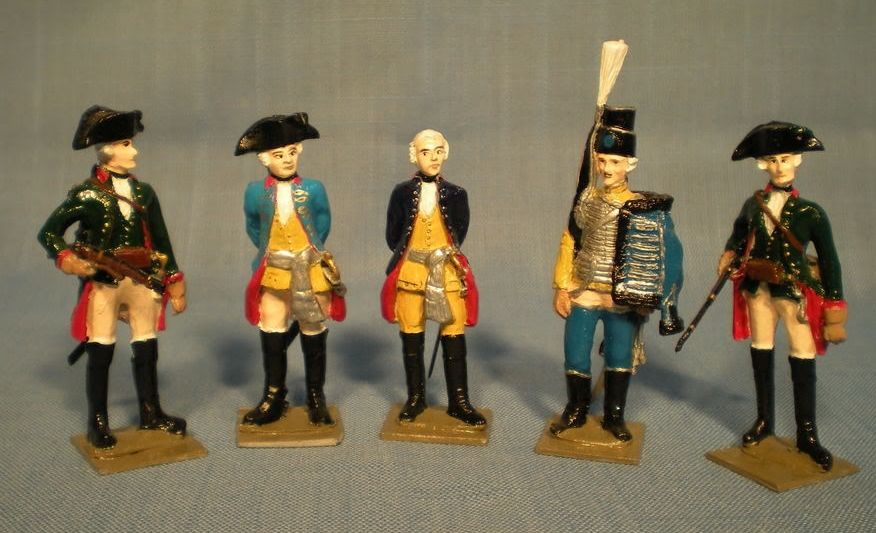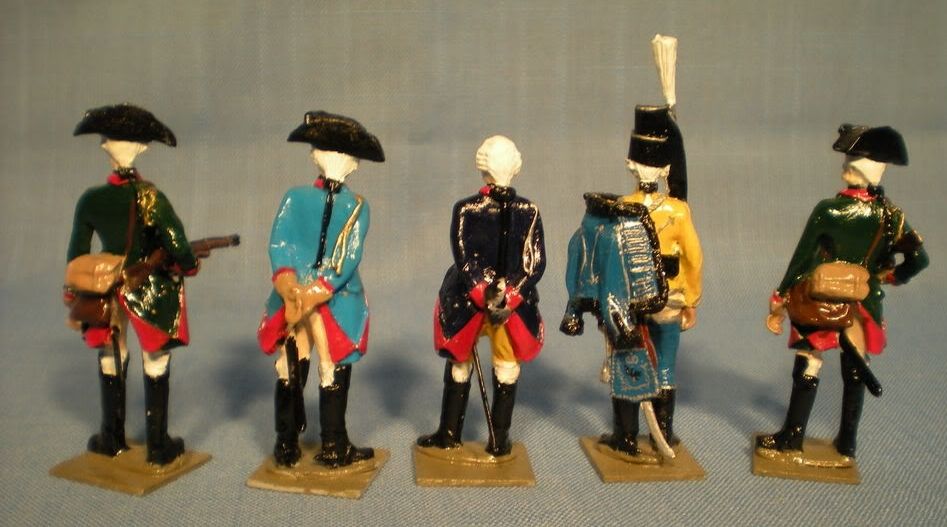theBaron
Major
- Joined
- Mar 27, 2008
- Messages
- 10,312
Well, we're snowed in here in Bethlehem, the first proper snow of this winter, and what better time to post some more pictures from my collection! I've shoveled several times, made some soup, and had a couple beers (Brooklyn Brewing Co.'s dark chocolate stout, a Christmas present from friends), and uploaded some pictures. So, here goes!
First, the old devil himself, der Alte Fritz, Old Fritz, as he was endearingly known, to his troops, and to the Berliners who saw him ride past every day:
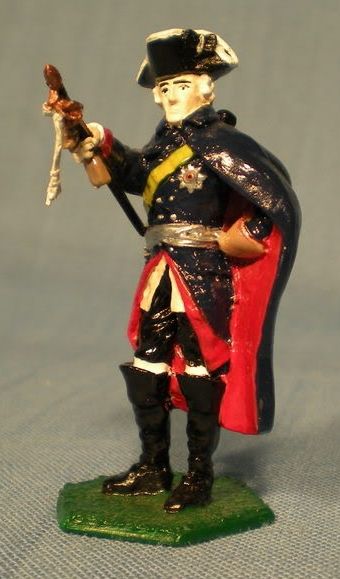
This casting is by New Hope Designs, from their series based on Osprey's "Men At Arms" series, which I do not hesitate highly to recommend. I liked the pose of this figure, the dynamic king, directing, always hands-on. Here is another angle:
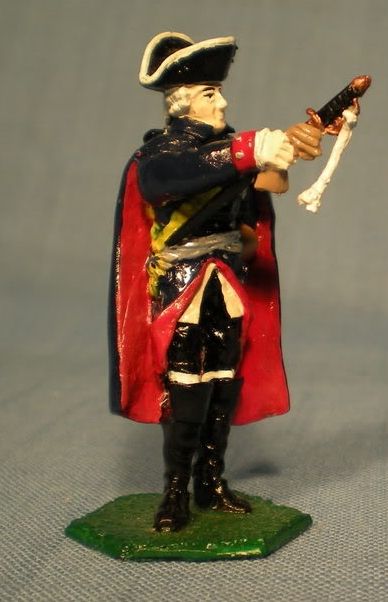
You can recognize New Hope Designs figures by the octagonal base. And if you have the figure in your hand, the bases are marked underneath as such.
Here is another figure of Frederick that I have, this one, depicting him out for a walk with his beloved dogs:
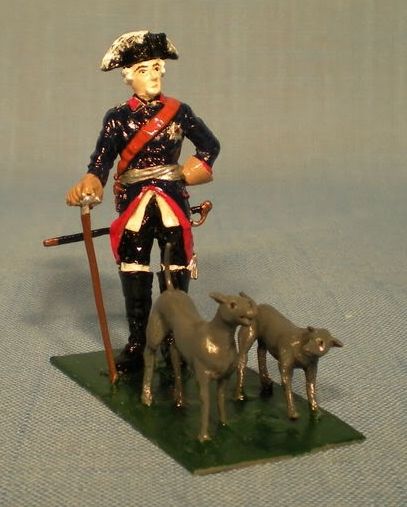
This kit was made by William Murray of NJ, who traded as "The Old Guard"
Alone among the officers, Frederick usually wore his coat closed, with his waist sash over it, because he felt the cold, and, well, he was the king, so he could wear his uniform as he pleased. One contemporary compared him to a Scottish chieftain, for the way he wore his uniform, to emphasize his connection to his army, the way a laird related to his clan.
Next up, another member of the royal house, the king's younger brother, Prince Henry:
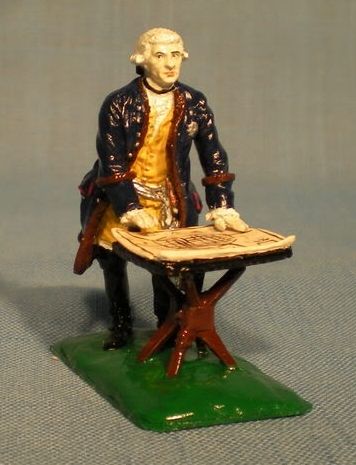
He was an able field commander, by some accounts, more skilled than Frederick himself, though my own reading is that they were equally talented but with different emphases in their generalship. Henry commanded his own army, in the "central" front of Saxony and Bohemia, during the Seven Years War. Prince Henry displayed great personal courage; for example, at the siege of Prague, when Regiment 13 stopped at the edge of a river, for fear of drowning, he himself plunged in, to show that it could be crossed, and so, restarted their advance.
Here is another picture from another angle:
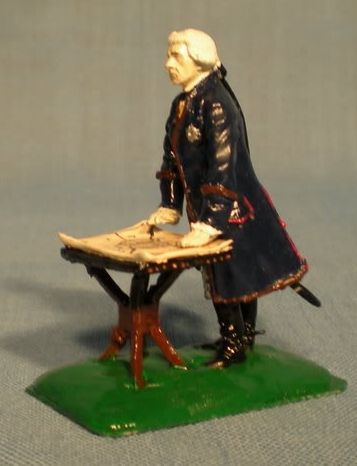
This figure is another Puchala casting, and is based on a sketch, I believe, by Menzel. I added a little bit of Miliput for groundwork, which let me push the map table and figure into the base.
More to follow...
First, the old devil himself, der Alte Fritz, Old Fritz, as he was endearingly known, to his troops, and to the Berliners who saw him ride past every day:

This casting is by New Hope Designs, from their series based on Osprey's "Men At Arms" series, which I do not hesitate highly to recommend. I liked the pose of this figure, the dynamic king, directing, always hands-on. Here is another angle:

You can recognize New Hope Designs figures by the octagonal base. And if you have the figure in your hand, the bases are marked underneath as such.
Here is another figure of Frederick that I have, this one, depicting him out for a walk with his beloved dogs:

This kit was made by William Murray of NJ, who traded as "The Old Guard"
Alone among the officers, Frederick usually wore his coat closed, with his waist sash over it, because he felt the cold, and, well, he was the king, so he could wear his uniform as he pleased. One contemporary compared him to a Scottish chieftain, for the way he wore his uniform, to emphasize his connection to his army, the way a laird related to his clan.
Next up, another member of the royal house, the king's younger brother, Prince Henry:

He was an able field commander, by some accounts, more skilled than Frederick himself, though my own reading is that they were equally talented but with different emphases in their generalship. Henry commanded his own army, in the "central" front of Saxony and Bohemia, during the Seven Years War. Prince Henry displayed great personal courage; for example, at the siege of Prague, when Regiment 13 stopped at the edge of a river, for fear of drowning, he himself plunged in, to show that it could be crossed, and so, restarted their advance.
Here is another picture from another angle:

This figure is another Puchala casting, and is based on a sketch, I believe, by Menzel. I added a little bit of Miliput for groundwork, which let me push the map table and figure into the base.
More to follow...



